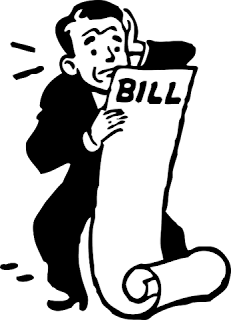Why Does a Motor Consume More Current Than a Heater? Understanding Power Factor
Why does a 2 HP motor (around 1.5 kW) consume more than 6 amps, while a 1.5 kW heater consumes almost the same amount of current?
The answer to this question lies in the concept of power factor. Power factor is a measure of how effectively electrical power is being used. It is defined as the ratio of the real power (measured in watts) to the apparent power (measured in volt-amperes or VA).
The real power is the actual power that is being used to do work, such as turning a motor or heating an element. The apparent power is the total power that is being delivered to the load, including both the real power and the reactive power (measured in VAR). The reactive power is the power that is required to maintain the magnetic fields in the load, such as the motor's windings or the heater's coil.
In general, the power factor of a load can be either leading or lagging, depending on whether the load is capacitive or inductive. A capacitive load, such as a bank of capacitors, has a leading power factor, because it absorbs reactive power from the source. An inductive load, such as a motor or a transformer, has a lagging power factor, because it generates reactive power and returns it to the source.
The power factor of a load can be improved by adding capacitors or inductors to the circuit, in order to compensate for the reactive power. This is known as power factor correction, and it can help to reduce the amount of current that is required to deliver a given amount of real power.
Now, let's apply this concept to the original question. A 2 HP motor that is rated for 1.5 kW of real power will typically have a power factor of around 0.8, which means that it will draw around 1.9 amps of current per kW of real power. This is because the motor has a lagging power factor, due to the inductive nature of its windings. Therefore, a 1.5 kW motor will consume around 2.85 amps of current (1.5 kW x 1.9 amps/kW).
On the other hand, a 1.5 kW heater that is rated for 1.5 kW of real power will typically have a power factor of around 1, because it is a purely resistive load. This means that it will draw the same amount of current as the real power, or around 1 amp per kW of real power. Therefore, a 1.5 kW heater will consume around 1.5 amps of current (1.5 kW x 1 amp/kW).
In summary, the reason why a 2 HP motor consumes more than 6 amps, while a 1.5 kW heater consumes almost the same amount of current, is due to the difference in their power factors. The motor has a lagging power factor, which causes it to draw more current than the heater, even though they have the same amount of real power.
The answer to this question lies in the concept of power factor. Power factor is a measure of how effectively electrical power is being used. It is defined as the ratio of the real power (measured in watts) to the apparent power (measured in volt-amperes or VA).
The real power is the actual power that is being used to do work, such as turning a motor or heating an element. The apparent power is the total power that is being delivered to the load, including both the real power and the reactive power (measured in VAR). The reactive power is the power that is required to maintain the magnetic fields in the load, such as the motor's windings or the heater's coil.
In general, the power factor of a load can be either leading or lagging, depending on whether the load is capacitive or inductive. A capacitive load, such as a bank of capacitors, has a leading power factor, because it absorbs reactive power from the source. An inductive load, such as a motor or a transformer, has a lagging power factor, because it generates reactive power and returns it to the source.
The power factor of a load can be improved by adding capacitors or inductors to the circuit, in order to compensate for the reactive power. This is known as power factor correction, and it can help to reduce the amount of current that is required to deliver a given amount of real power.
Now, let's apply this concept to the original question. A 2 HP motor that is rated for 1.5 kW of real power will typically have a power factor of around 0.8, which means that it will draw around 1.9 amps of current per kW of real power. This is because the motor has a lagging power factor, due to the inductive nature of its windings. Therefore, a 1.5 kW motor will consume around 2.85 amps of current (1.5 kW x 1.9 amps/kW).
On the other hand, a 1.5 kW heater that is rated for 1.5 kW of real power will typically have a power factor of around 1, because it is a purely resistive load. This means that it will draw the same amount of current as the real power, or around 1 amp per kW of real power. Therefore, a 1.5 kW heater will consume around 1.5 amps of current (1.5 kW x 1 amp/kW).
In summary, the reason why a 2 HP motor consumes more than 6 amps, while a 1.5 kW heater consumes almost the same amount of current, is due to the difference in their power factors. The motor has a lagging power factor, which causes it to draw more current than the heater, even though they have the same amount of real power.
